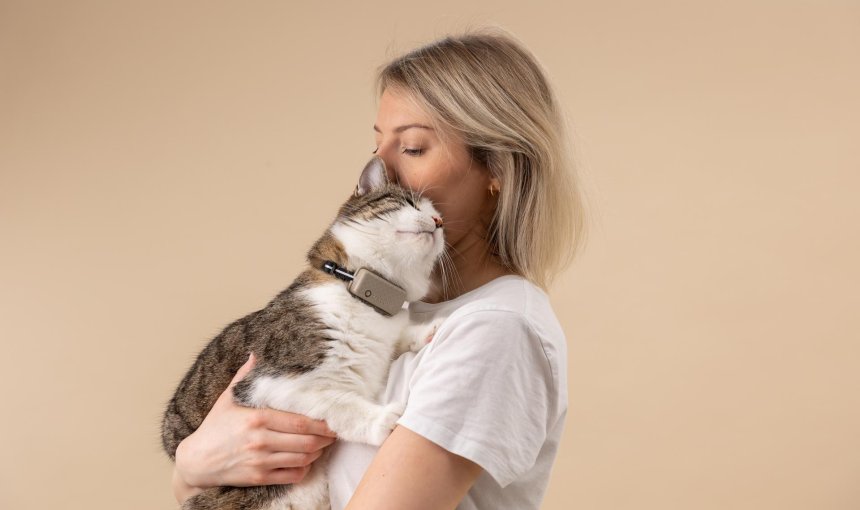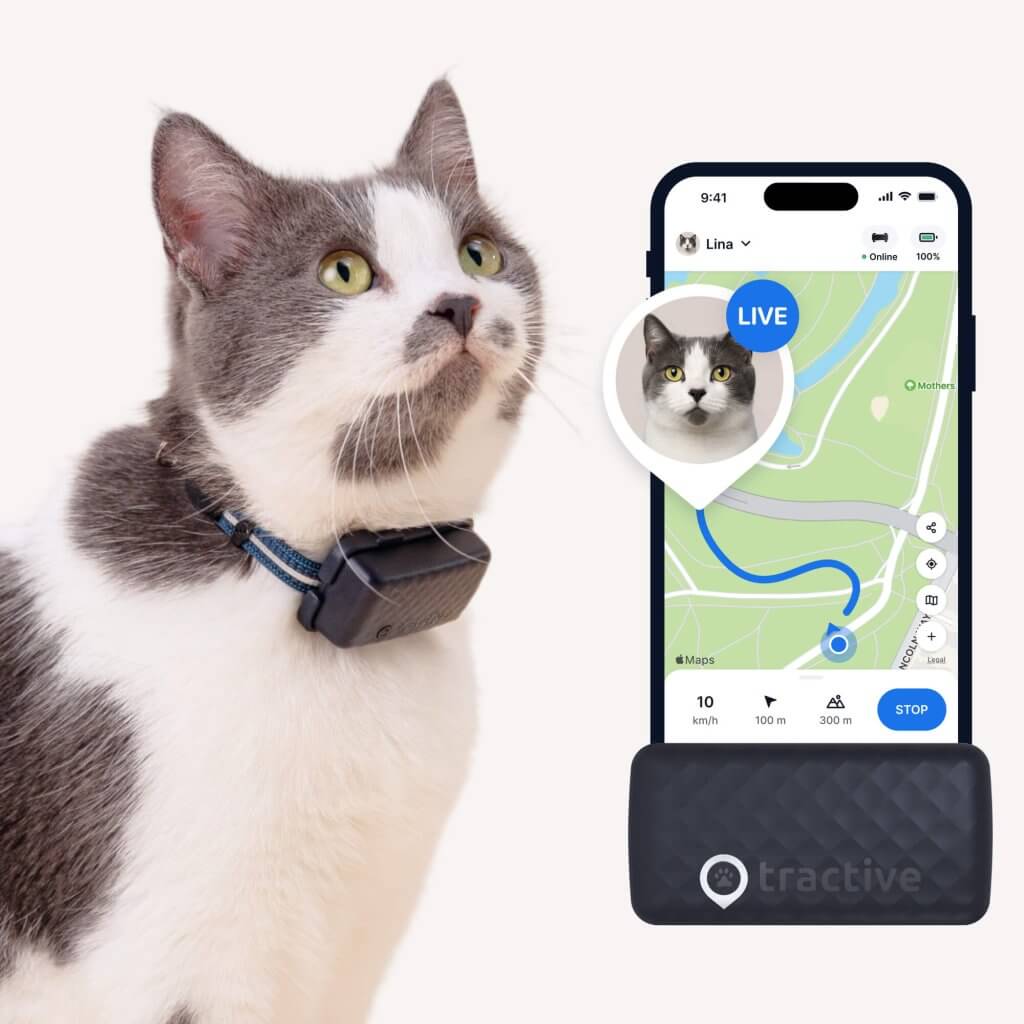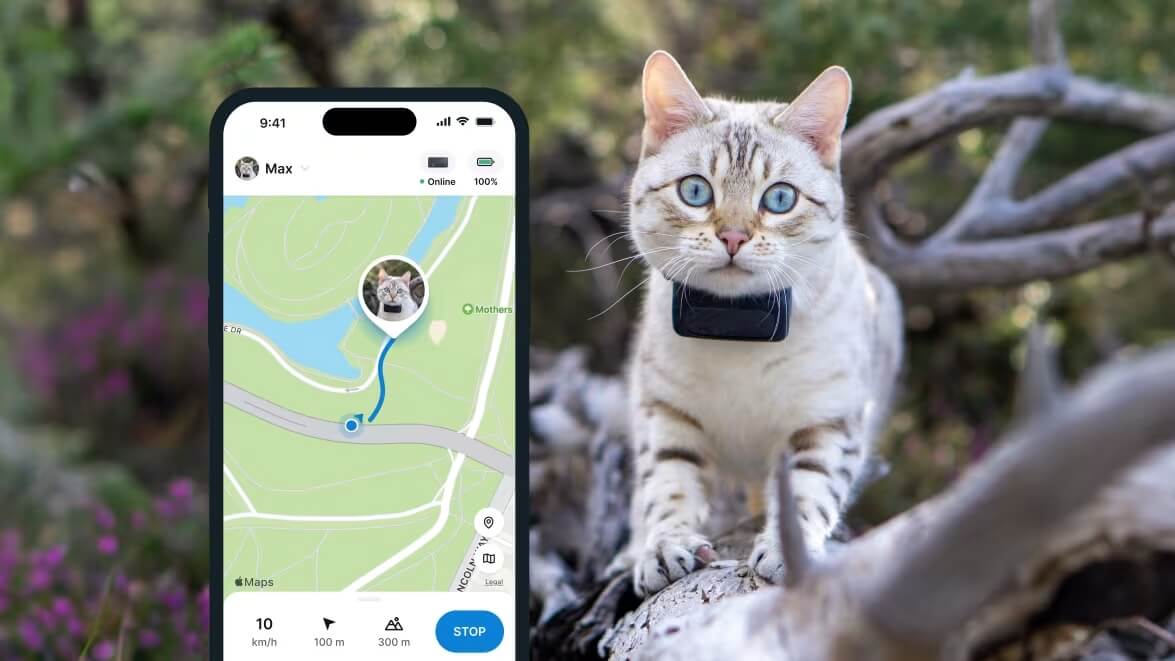 Approved by Dr. Dwight Alleyne, DVM
Approved by Dr. Dwight Alleyne, DVM Signs Of Separation Anxiety In Cats & How To Handle It
Much like dogs, cats are also vulnerable to separation anxiety. Which, unfortunately, can turn up as scratched furniture, excessive meowing...or running away from home. So how do you deal with it?

While more commonly associated with dogs, separation anxiety in cats tends to turn up in different ways too. (Like excessive meowing, running away – or a thoroughly shredded set of curtains once you’re back home.) So in this post, we’re going to cover its main signs, including how to treat it and what to do if your cat tends to experience it mainly at night. Plus, how to catch on early in case your anxious kitty is trying to make an escape attempt.

Find out where your cat spends their time.
Read moreWhat might cause separation anxiety in cats?
Much like dogs, separation anxiety in cats develops when they grow overly attached to you. Because you’re their primary caregiver, you’re their source of warmth, food, shelter, and love. So they feel distressed and anxious when you leave them alone. This anxiety stems from your cat’s fear that you’ll abandon them or never return.
Do all cats develop separation anxiety? Not necessarily. But some might be more prone to it because of their temperament and past experiences.1 For example, your cat might be more vulnerable if they’re:
- Female, with female cats being diagnosed with separation anxiety more often than males
- The only pet in your home
- Weaned early or bottle-fed from a young age
Other factors that might cause separation anxiety in cats
- Early orphaning
If kittens are orphaned or separated from Mama cat early, they might not learn to feel safe and secure around a primary caregiver. - Stress
A major change in routine can throw your cat off balance. So they might pace restlessly or scratch at your door when you’re not “around” to comfort them. - Loneliness
Especially when you’re gone for work. Some company (in the form of another pet or person) can help them benefit from the companionship. - Being cooped up indoors
A lack of stimulation can cause your cat to feel bored, frustrated, or anxious. So it might lead them to get up to some mischief just to get some attention from you.
Now if all this seems alarming, here’s the good news. A 2019 study found that the vast majority of cats tend to be securely attached to their parents.2 Meaning, these cats felt more relaxed and less stressed when near their caregivers.
Helping your cat develop this secure attachment is one way of overcoming their separation anxiety. It’s gently guiding your cat to learn that they’re safe and loved – even if you aren’t around all the time.
Signs of separation anxiety in cats
If your cat is extra clingy after you’re back from work or yowls up a storm when you’re getting ready to head out, these could be signs of separation anxiety. Here are a couple of signs you could keep an eye out for:
- Excessive vocalization
If you find your cat meowing or crying behind the door once you’ve left for work, it’s how they’re trying to call you back or signal their anxiety at you leaving. - Destructive, attention-seeking behavior
Your cat might scratch your furniture, curtains, or pee outside their litter box. These destructive behaviors might also be an outlet for their nervous energy. - Excessive grooming
Similar to how Mama cat might have done it when they were kittens, grooming is one way your cat might self-soothe when you’re not around. - Changes in appetite
Whether it’s overeating or undereating, both changes in appetite indicate that your cat is trying to cope with stress.
- Hiding or clinging behavior
Your cat might hide in an unusual place when you’re preparing to leave home. Or, depending on their temperament, they might also cling to you, seeking constant attention. - Restless pacing
Especially when you’re just about to leave, which may indicate your cat’s agitation and anxiety. - An escape attempt
- All combined, the experience of anxiety, stress, and abandonment can drive your cat to try and escape home. (Likely to find you!) In these cases, a cat GPS tracker can be a potential lifesaver. With a Tractive GPS, you can set up a “safe zone” around your house and get an instant escape alert if your cat has snuck past it.

Track your cat wherever they go
Get real-time location information, wherever they go. Find out when they go somewhere they shouldn’t, with Virtual Fences. And discover their favorite spots with Territory.
How to treat your cat’s separation anxiety
Separation anxiety might seem difficult to deal with – especially if you’re a busy cat parent. But with a little patience and consistency, you can help your cat overcome their distress when you leave. Here are a couple of best practices to help.
Practice gradual departures
The root of your cat’s separation anxiety is excessive distress when you leave. But with gradual departures, you can help them learn that it’s not the end of the world when you’re not around.
- Start by leaving for short periods of time. (Even just outside your apartment door works.)
- Give your cat tons of cuddles, praise, and affection once you do return.
- Gradually, increase the duration of your absence – but keep praising, snuggling, and encouraging your cat when you’re back.
Over time, this will help your cat slowly trust that you’re not going to suddenly abandon them. (And that they can count on you to return.) But start slow and build up gradually so that they can adapt at their own pace.
Reinforce your cat’s behaviors as they occur
Much like dogs, cats can also benefit tremendously from behavioral adjustment techniques. So make sure you offer your cat plenty of praise and treats when you see them behaving calmly. (Whether that’s relaxing or refusing to scratch your furniture.) This will help your cat associate “good” behaviors with a positive experience. I.e., attention and affection from you.
Read more: Cat Clicker Training: Tips, Tricks & Best Practices
De-condition your cat
Cats are also pretty observant of your behaviors. So watch out for whether the jingling of your keys or you getting ready for work tend to make them anxious. You can “de-condition” these sounds by, say:
- Picking up your work bag
- Giving your cat a hug
- And then putting your bag back down again. (Without leaving home!)
Over time, your cat will learn that just the sounds of you “leaving” aren’t always linked to a negative experience. I.e., being left alone for a long period of time.
Build an enriching environment for your cat at home
Make sure your cat’s home environment is one that can help them stay both physically and mentally engaged. This can help keep them distracted in a good way while you’re away. Here are a couple of ways you can help build an engaging, anxiety-reducing environment at home:
- Interactive toys
Like food puzzles that dispense food when your cat interacts with them. - Catnip-infused toys and puzzles
These can provide your cat a bit of energy when they sniff or otherwise interact with them. - Set up some vertical spaces
Like cat trees and window perches. This helps keep them physically active and benefit from the exercise. A vertical space also lets your cat observe the outdoors, enjoy the passing scenery, and get some natural sunlight. Plus, they can retreat to it when they’re feeling anxious or overwhelmed. - Keep around some scratch-friendly items
With a scratching post or surface, you can help your cat redirect their nervous energy away from your furniture. It’ll also help your cat get some exercise and stay limber. - Use a cat-friendly pheromone spray
Pheromone sprays like Feliway are a safe option to use at home for your cat. Spray some in areas they like to spend most of their time. It can help create a calming environment for your cat. - Leave some of “yourself” behind for your cat
This could be a piece of your clothing, one of the toys you play with together, or anything that has your scent to help them feel more reassured and comfortable.
Make the most of your time together once you’re home
It can be tempting to come home and collapse into your couch (we’ve all been there.) But make time for your cat – give them plenty of cuddles and affection once you’re home. Praise them for being a brave little trooper and for being so good all day by themselves at home. Or play an easy, interactive game together. Like getting them to chase a laser or a feather toy.
Your cat will benefit tremendously from the quality time with you. Gradually, they’ll feel less anxious, since they’ll associate your return with a positive experience. Bonus points if you’re able to develop this into a predictable, consistent schedule of feeding, playtime, and interactions. Your cat will look forward to it even when you’re not around.
Consider a companion for your cat
Whether it’s adopting a new pet, hiring a pet-sitter, dropping them at friends or family, or finding an animal boarding service, your cat will benefit from some company while you’re gone. In some cases, introducing another cat (or even dog) as a companion can help reduce your cat’s separation anxiety.
No matter what you choose, we’d always recommend starting slow and bringing on any changes to your cat’s routine gradually. Big changes (like adopting a new pet) might stress your cat out and cause them to react defensively instead. So take some time to consider how sociable your cat is and how well they’d respond to different situations and company.
Read more: How To Introduce Cats (Without A Cat-Astrophe)
Let your cat explore the great outdoors
Even your indoor cat is curious about the goings-on outside – from passing birds to those pesky squirrels to the sights, sounds, and smells of nature. They also benefit from the exercise, natural sunlight, sensory stimulation – and keeping their natural hunting and exploring instincts sharp.
In fact, outdoor cats usually have large territories to defend. So they might actually feel stressed and anxious if you’re not letting them venture outside.
So start gradually with supervised outdoor activities with your cat. Play together in your backyard regularly, or take them on short walks outside. This will give your cat the opportunity to interact with other animals, including other cats. Which, with time, can help them feel less anxious when you’re gone.
💡Worried about your cat’s safety outdoors? Follow their every step in real-time with your trusty Tractive device.

Your furry friend’s health and wellbeing means as much as to us as it does to you. So we’ve made it a priority to only share medically-relevant content on our blog. This post was checked, double-checked, and medically verified by Georgia-based vet, Dr. Dwight Alleyne.

Dr. Dwight Alleyne, DVM
Originally from Long Island, New York, Dr. Alleyne began his career at a no-kill animal shelter before becoming a licensed veterinary technician. He graduated from Cornell University Veterinary College in 2006 and completed an internship at Purdue University. Now practicing in Georgia, Dr. Alleyne specializes in soft tissue surgery and ultrasounds. He also writes pet health articles on his website, “The Animal Doctor Blog” (www.anmldrblog.com).



